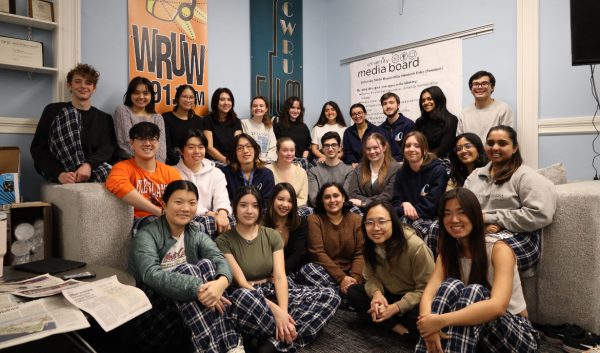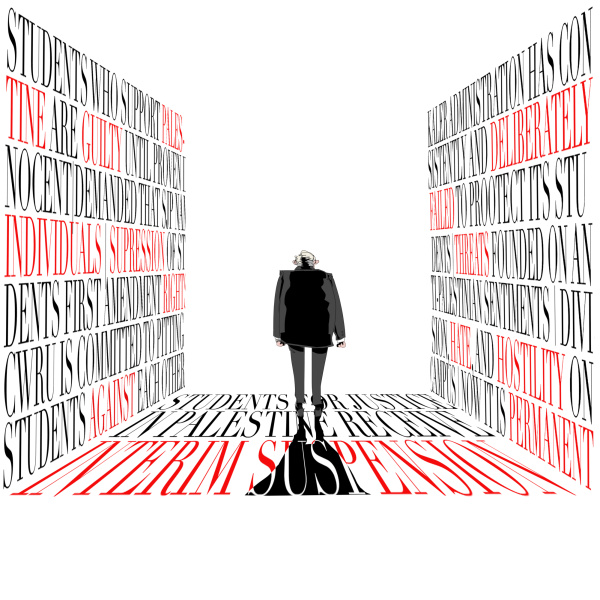Editorial: A false notion of diversity
November 2, 2018
One of the first programs any Case Western Reserve University student is exposed to is “Diversity 360,” a brief training during Orientation Week that attempts to educate first-year students on the cultural nuances of their new community. It makes sense to cover this topic during the early period of campus living, especially with our large international population and the fact that we’re adjacent to one of the poorest neighborhoods in the country.
Yet, to call diversity, or right-relations for that matter, a core part of this campus would be inaccurate, to say the least.
The topic of diversity came back into discussion this past week when the University announced it would be cutting two tenure-track positions in African-American history. These positions were core components of the Department of History, as is typical with any major university. The two previous professors to hold these positions were both women of color, representing a critical perspective in a field of study that is primarily intro- and retrospective. But according to the University, these considerations do not matter if there is not enough budget space. Apparently, the topic of study is simply not relevant enough to warrant a non-visiting position.
It’s pretty incredible how tone-deaf of an action this was on the part of the administration. We live in one of the most vital and turbulent periods of black history in America, where movements such as “Black Lives Matter” have taken root across the country. In the past few years, this campus has seen a number of incidents reflective of the deep racial prejudices which have persisted into the 21st century. A shooting in front of the Corner Alley and the stoppage of a city councilman by police on campus are just two that we saw in the 2017-18 academic year.
Even with a direct response from Undergraduate Student Government and a letter co-signed by numerous other organizations along with the Department of History, the University still failed to offer proper justification for its actions. Their response to the letter, once again, hid behind supposed monetary concerns while avoiding the social and precedential concerns brought up by the letter’s author. This week’s issue of The Observer features an article that can provide a better glimpse into their explanational shortcomings.
This entire situation emblematizes the University’s failure to adequately promote a diverse campus community. Isolated efforts are used as proof of success in this mission, when many of these initiatives, programs and trainings are in fact indications of their shortcomings.
Take the aforementioned Diversity 360 program for example. CWRU flaunts it as being rigorously created and fueled by research from other institutions. In practice, it feels out-of-touch and poorly constructed to prepare students for coexistence on a socially complex campus. Much of what the Orientation Week training covers pertains to micro-aggressions and identity, but the approach is highly reductive and oversimplified. It equates numerous actions which are blatantly racist with mere slip-ups and acts as though a catch-all method for dealing with discrimination is possible. Some students consider the Diversity 360 experience in its entirety to be waste of time, demonstrating how poorly the mission of the program is coming across.
If the goal of Diversity 360 was actually to take root in the minds of students, we would probably be able to tell. The trope of not “going beyond the bridge” wouldn’t be as widespread as it is, nor would it be a key takeaway from Orientation Week conflicting with the anti-micro-aggression model our university has developed. We wouldn’t have a problem with students calling security on black people walking through campus or at least it would manifest to a lesser degree.
The study of African-American history would not be considered niche enough to warrant defunding.
There’s simply too much separation of diversity from the campus culture. It remains an abstract goal of the University rather than a fundamental component of the community. Look at the way tours are constructed; the way our tours portray campus demonstrates this problem. Beyond casual mention of the Office of Multicultural Affairs and some various student organizations, it is difficult for prospective students to see this campus as genuinely reflecting a diverse environment. The superficial components are there, but little can be said for the actual level of cultural cohesion.
And if you wish to bring in metrics, CWRU struggles immensely in fostering a campus that mirrors the demographics of its surroundings. As of 2017, only four percent of our undergraduate student body is African-American, compared to 53.3 percent for the entire city. We don’t need to be a perfect reflection of our environment, but this disparity can be interpreted as a failing of the University to support and draw from its surroundings.
While this is a systemic, nationwide issue, there are definitely shortcomings which can be attributed to the University’s academic policy and structure. A little more than a month ago, we covered the disparity in graduation rate between Pell Grant recipients and non-recipients. These are some of the most underprivileged students on campus, and their graduation rate is indicative of a perpetuation of the obstacles they overcame, rather than an end to the cycle that disadvantages them.
The University needs to make a decision. Does it really want to hide behind a thinly-veiled budget problem in justification of the downgrading of a position that is both socially and academically critical? Or does it wish to frugally continue with misguided attempts at celebrating its diverse community?
Given the homelessness sculpture they just put outside of the Mandel School of Applied Social Sciences, I think their direction is apparent.






















